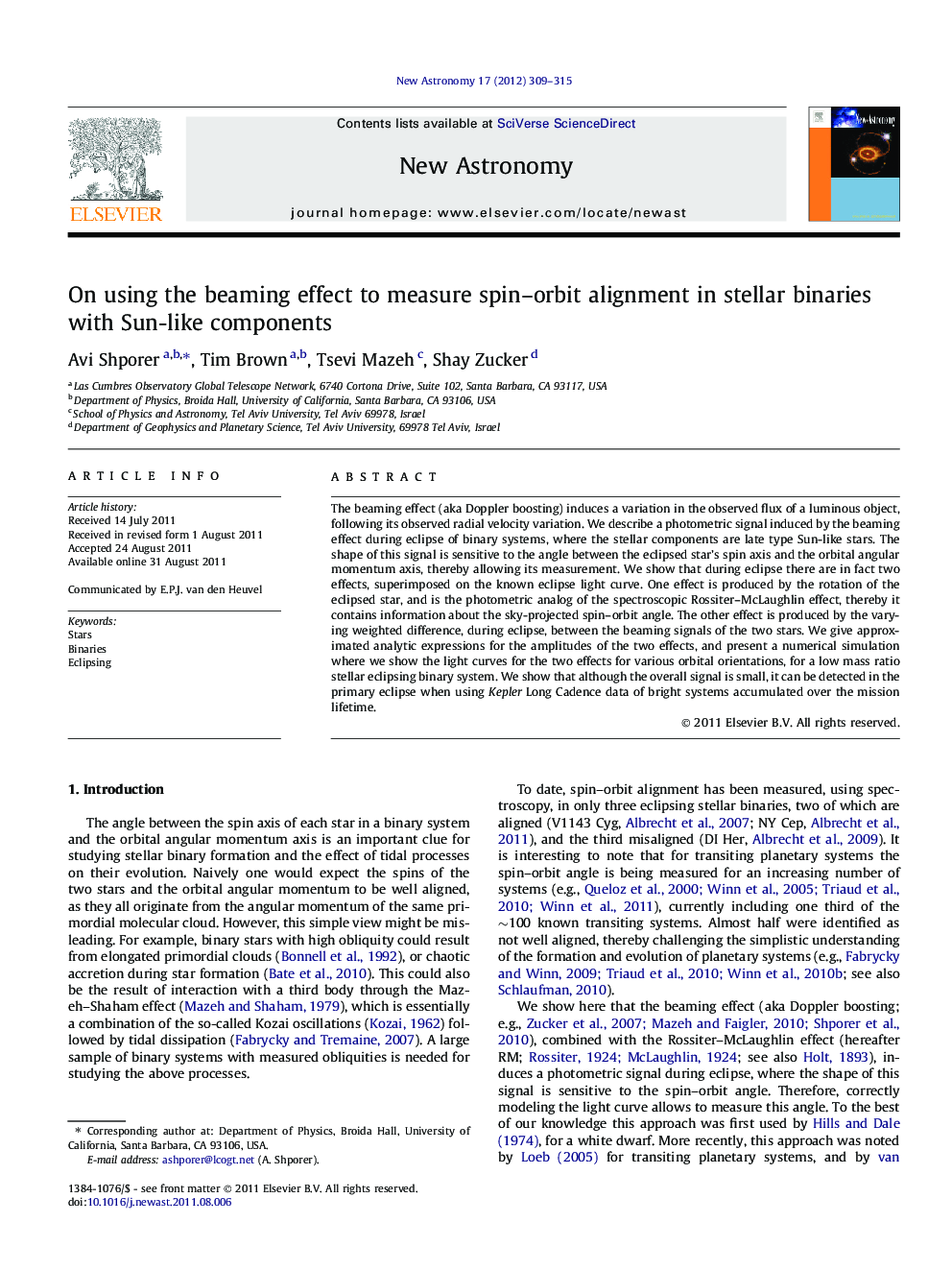| Article ID | Journal | Published Year | Pages | File Type |
|---|---|---|---|---|
| 1779373 | New Astronomy | 2012 | 7 Pages |
The beaming effect (aka Doppler boosting) induces a variation in the observed flux of a luminous object, following its observed radial velocity variation. We describe a photometric signal induced by the beaming effect during eclipse of binary systems, where the stellar components are late type Sun-like stars. The shape of this signal is sensitive to the angle between the eclipsed star’s spin axis and the orbital angular momentum axis, thereby allowing its measurement. We show that during eclipse there are in fact two effects, superimposed on the known eclipse light curve. One effect is produced by the rotation of the eclipsed star, and is the photometric analog of the spectroscopic Rossiter–McLaughlin effect, thereby it contains information about the sky-projected spin–orbit angle. The other effect is produced by the varying weighted difference, during eclipse, between the beaming signals of the two stars. We give approximated analytic expressions for the amplitudes of the two effects, and present a numerical simulation where we show the light curves for the two effects for various orbital orientations, for a low mass ratio stellar eclipsing binary system. We show that although the overall signal is small, it can be detected in the primary eclipse when using Kepler Long Cadence data of bright systems accumulated over the mission lifetime.
► The beaming effect induces two photometric signals in eclipses of Sun-like stars. ► Light curve modeling allows to measure the eclipsed star spin–orbit alignment. ► We show that Kepler data will be precise enough to measure the signals.
